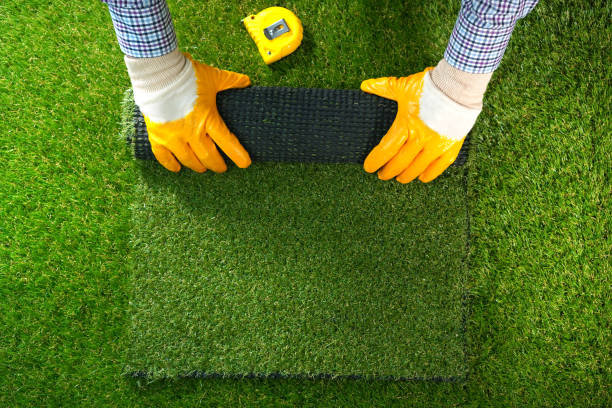Introduction
The artificial turf market has seen significant growth in recent years, and it’s showing no signs of slowing down. With an anticipated compound annual growth rate (CAGR) of 5.9% in the coming years, the demand for artificial turf is expanding across various sectors. One of the key drivers behind this growth is the rapid expansion of hotels and airports worldwide. As these industries continue to evolve, the need for durable, aesthetically pleasing, and low-maintenance landscaping solutions like artificial turf becomes increasingly apparent.
The Growing Demand for Artificial Turf
Artificial turf, once primarily associated with sports fields, has now found its way into a myriad of applications. From residential lawns to commercial spaces, the versatility and cost-effectiveness of artificial turf make it an attractive alternative to natural grass. Its durability, especially in high-traffic areas, and its ability to withstand extreme weather conditions have contributed to its rising popularity.
The artificial turf market is set to expand at a 5.9% CAGR, driven by advancements in technology that have improved the quality, appearance, and sustainability of artificial grass. These improvements have made artificial turf more appealing to a broader range of consumers and industries.
Impact of Hotel and Airport Expansion on the Artificial Turf Market
The hospitality and transportation sectors are key contributors to the growth of the artificial turf market. As hotels and airports undergo significant expansion, the demand for low-maintenance and aesthetically pleasing landscaping solutions has surged. Artificial turf fits this need perfectly, offering a green and pristine appearance year-round without the ongoing maintenance challenges associated with natural grass.
- Hotels: The hospitality industry is increasingly adopting artificial turf for outdoor spaces, including gardens, rooftop terraces, and poolside areas. The primary reason for this shift is the cost-effectiveness and low-maintenance nature of artificial turf. Hotels aim to provide a luxurious experience to guests while minimizing operational costs, and artificial turf helps achieve this balance. Additionally, artificial turf is an eco-friendly option, as it requires no watering, reducing water usage—an important consideration in areas facing water scarcity.
- Airports: Airports are another significant market for artificial turf. With large expanses of land to cover and strict safety and maintenance requirements, airports benefit greatly from the use of artificial turf. The turf is used in areas such as terminal surroundings, runways, and even in the interiors for decorative purposes. The durability of artificial turf ensures that these high-traffic areas maintain their appearance and functionality without the need for constant upkeep.
Future Outlook
The expansion of hotels and airports is expected to continue at a robust pace, particularly in emerging markets where infrastructure development is a priority. As these sectors grow, so too will the demand for artificial turf. The forecasted 5.9% CAGR growth for the artificial turf market reflects this ongoing trend and highlights the increasing importance of sustainable and cost-effective landscaping solutions.
Additionally, as environmental concerns become more prominent, the demand for artificial turf that mimics the look and feel of natural grass, while also being eco-friendly, is expected to rise. Manufacturers are investing in research and development to produce turf that is not only durable but also recyclable and made from sustainable materials.
Conclusion
The artificial turf market is on a growth trajectory, driven largely by the expansion of hotels and airports. With a forecasted 5.9% CAGR, the industry is set to see continued innovation and adoption across various sectors. As more businesses recognize the benefits of artificial turf, from cost savings to environmental sustainability, its presence in the global market will only strengthen. Whether for aesthetic enhancement, durability, or maintenance ease, artificial turf is becoming the go-to choice for a growing number of industries worldwide.
